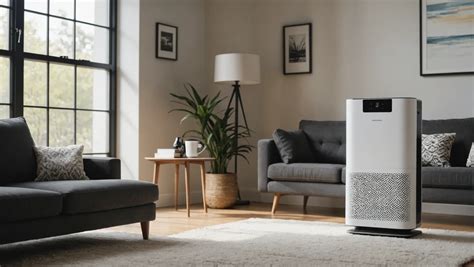Introduction
With the increasing awareness of indoor air quality and its impact on health, air purifiers have become an essential home appliance. However, choosing the right air purifier can be challenging due to the numerous models and certifications available. This comprehensive guide will provide you with all the information you need about air purifier certifications and regulations, empowering you to make an informed decision.

Primary Certification Standards for Air Purifiers
Several organizations set standards for air purifiers to ensure their effectiveness and safety. Here are some of the most recognized certifications:
1. Association of Home Appliance Manufacturers (AHAM)
AHAM Verifide Program: This program certifies air purifiers based on their Clean Air Delivery Rate (CADR), which measures the device’s ability to remove particles, dust, and smoke.
2. Underwriters Laboratories (UL)
UL 2900: This standard evaluates air purifiers for their safety and performance, including their ability to remove particles, ozone emissions, and electrical hazards.
3. California Air Resources Board (CARB)
CARB Air Purifier Regulation: This regulation sets emission standards for ozone and other harmful gases released by air purifiers.
Secondary Certification Standards for Air Purifiers
In addition to the primary certifications, various other organizations offer secondary certifications that address specific features or aspects of air purifiers. These include:
4. Energy Star
Energy Star: This program certifies air purifiers that meet energy efficiency requirements, helping consumers save on electricity costs.
5. Good Housekeeping Institute
Good Housekeeping Seal of Approval: This certification signifies that an air purifier has undergone rigorous testing and meets the magazine’s high standards for performance and durability.
Regulations Governing Air Purifiers
Air purifiers are also subject to regulations set by various government agencies. For example:
6. Environmental Protection Agency (EPA)
The EPA regulates the sale and distribution of air purifiers that produce ozone. Ozone is a harmful gas that can contribute to respiratory problems.
7. Federal Trade Commission (FTC)
The FTC enforces advertising regulations for air purifiers, ensuring that manufacturers make truthful and substantiated claims about their products.
Choosing the Right Certification for Your Needs
When selecting an air purifier, it’s important to consider your specific needs and requirements. Ask yourself the following questions:
- What type of air pollutants are you most concerned about?
- Do you need an air purifier for a specific room or an entire home?
- What is your budget?
- Are you interested in energy-efficient models?
Tips for Selecting a Certified Air Purifier
- Look for products certified by reputable organizations like AHAM, UL, or CARB.
- Check the CADR rating for models that effectively remove pollutants relevant to your needs.
- Consider models with a good warranty to ensure peace of mind.
- Read customer reviews to gain insights from real-world users.
Benefits of Certified Air Purifiers
Investing in a certified air purifier offers several benefits, including:
- Improved indoor air quality: Certified air purifiers remove harmful pollutants, creating a healthier indoor environment.
- Reduced allergy and asthma symptoms: Air purifiers can alleviate symptoms by removing allergens and irritants.
- Enhanced sleep quality: Improved air quality can promote better sleep and overall well-being.
- Decreased risk of respiratory infections: Air purifiers can help reduce the spread of airborne viruses and bacteria.
Future Trends and Innovations in Air Purifiers
The air purifier industry is constantly evolving, with new technologies and innovations emerging. Some future trends include:
- Intelligent air purifiers: Air purifiers with built-in sensors and connectivity to monitor and adjust purification settings according to air quality conditions.
- Multi-functionality: Air purifiers that combine air purification with other features such as humidification, dehumidification, or air conditioning.
- Portable and personal air purifiers: Compact and portable air purifiers for use in on-the-go settings and personal spaces.
Conclusion
Air purifier certifications and regulations play a crucial role in ensuring the effectiveness and safety of these devices. By understanding the different standards and regulations, you can choose an air purifier that meets your specific needs and provides the desired air purification benefits. As the industry continues to innovate, we can expect even more advanced and efficient air purifiers in the future.





















